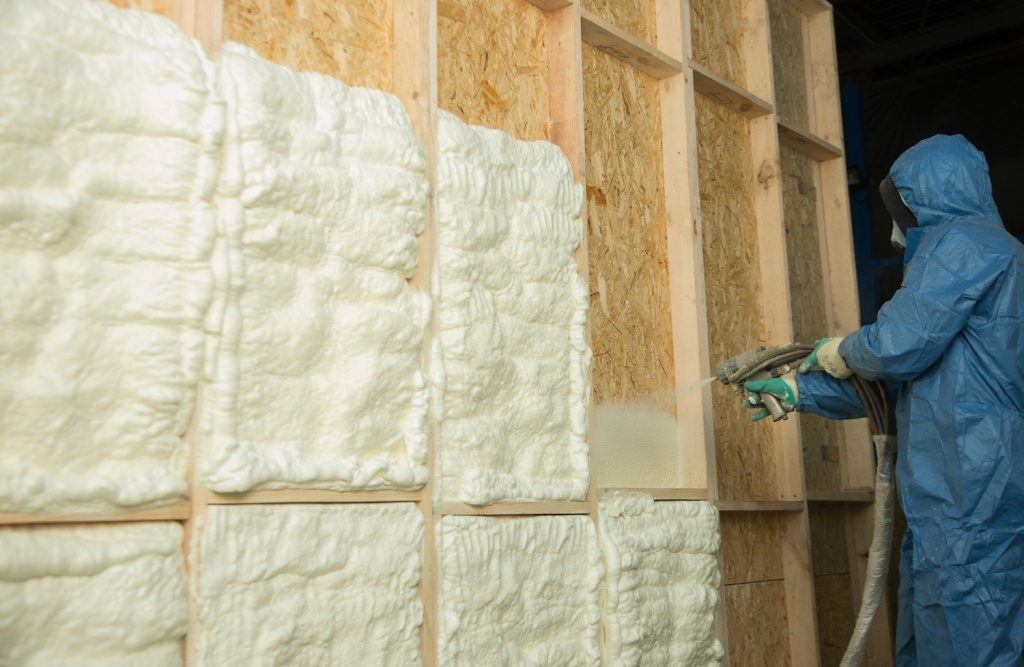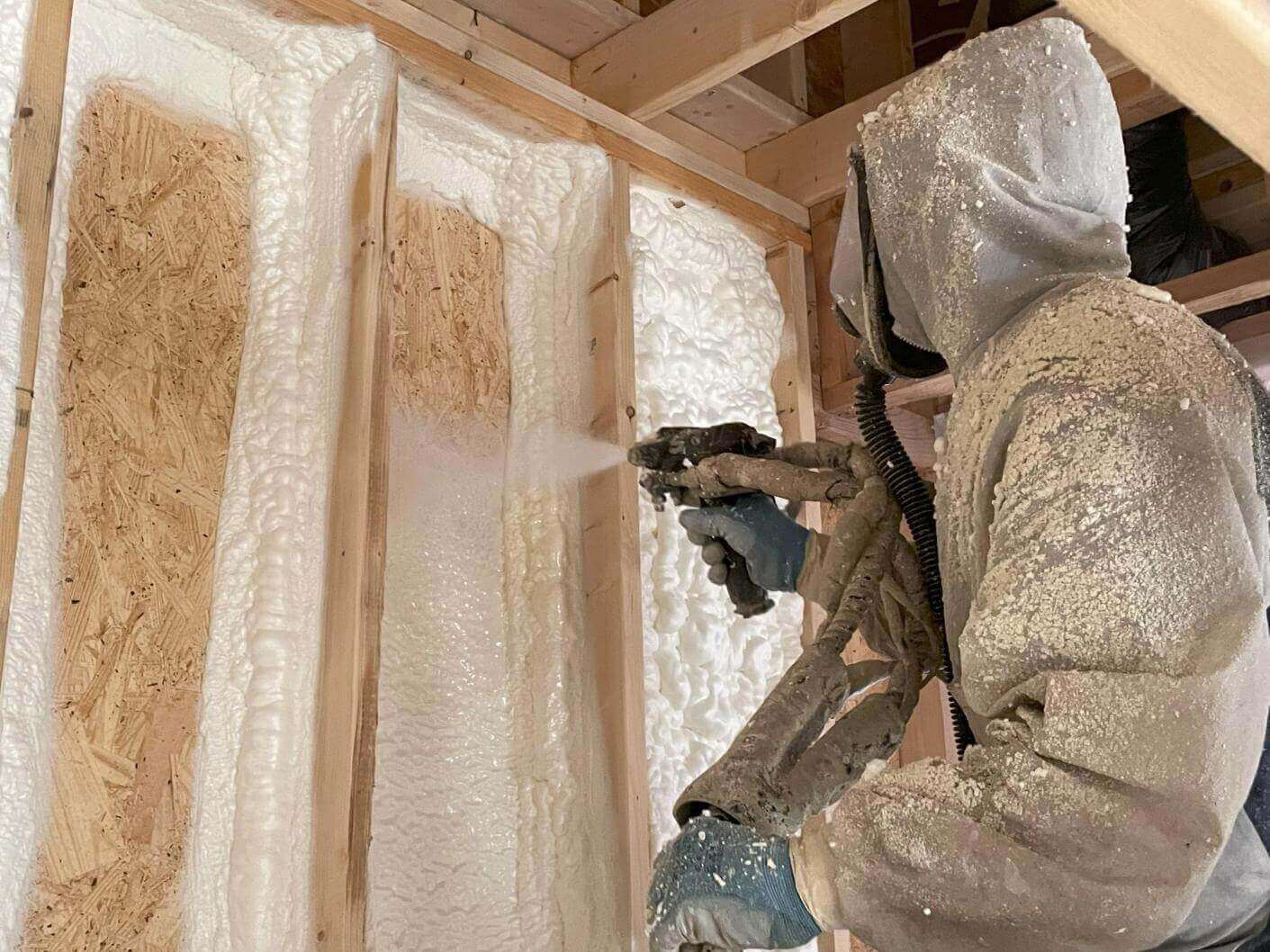Leading Applications of Spray Foam for Residential and Commercial Properties
Leading Applications of Spray Foam for Residential and Commercial Properties
Blog Article
Spray Foam: The Ultimate Option for Air Sealing and Insulation
Spray foam insulation has become a leading solution for reliable air securing and thermal insulation, offering a distinct combination of buildings that establish it apart from typical approaches. Its ability to expand and fill up spaces makes it particularly reliable in protecting against air leak, which can considerably impact power effectiveness. Recognizing the complete range of its benefits, installation processes, and comparisons with various other insulation types is critical for making educated choices. As we check out these elements, the implications for both brand-new building and constructions and retrofits end up being increasingly substantial. What variables should affect your choice?
What Is Spray Foam?
Spray foam is a flexible insulation material that incorporates the concepts of air securing and thermal resistance to enhance energy performance in structures. Composed largely of polyurethane or various other similar compounds, spray foam is used as a liquid that expands upon contact with surface areas, creating a solid, constant layer of insulation. This one-of-a-kind building allows it to fill up spaces, splits, and spaces that conventional insulation materials might ignore, providing a superior air seal.
There are two primary sorts of spray foam: open-cell and closed-cell. Open-cell spray foam is lighter and much more flexible, offering outstanding audio absorption and a lower R-value per inch - Spray Foam. In comparison, closed-cell spray foam is denser, offering a greater R-value, wetness resistance, and included structural stability to building parts
The application procedure typically involves specific equipment, making sure a seamless application that sticks to various substrates, including timber, metal, and concrete. This adaptability makes spray foam ideal for both brand-new building and constructions and retrofitting existing frameworks. Its capacity to create a closed obstacle significantly contributes to reducing energy usage and improving indoor air high quality, thereby making it a recommended selection among home builders and house owners alike.
Benefits of Spray Foam Insulation
Among the most considerable advantages of spray foam insulation is its phenomenal capacity to develop a constant air barrier, which successfully reduces energy loss. Unlike typical insulation products, spray foam expands to load voids and fractures, guaranteeing that air leakage is substantially minimized. This particular not just boosts power performance yet likewise causes lower energy expenses over time.
Furthermore, spray foam insulation offers exceptional thermal resistance, adding to an extra steady interior environment. Its high R-value per inch permits reliable insulation in restricted spaces, making it excellent for attic rooms, wall surfaces, and crawl areas. Additionally, the moisture-resistant residential or commercial properties of spray foam aid avoid mold and mildew and mold growth, promoting healthier living problems.
Another critical benefit of spray foam insulation is its sound-dampening top qualities (Spray Foam). It properly lowers noise transmission in between areas, producing a quieter and extra comfortable home atmosphere. The toughness of spray foam likewise sticks out, as it does not sag or resolve over time, preserving its performance throughout its life expectancy
How Spray Foam Functions
Understanding just how spray foam insulation functions is necessary for appreciating its performance in air securing top article and thermal resistance. Spray foam insulation contains two main parts: isocyanate and polyol resin. When these components are blended, they undertake a chemical reaction that triggers the material to increase rapidly, developing a dense foam that fills spaces, cavities, and fractures.
As the foam broadens, it sticks to surface areas, creating an impermeable seal that substantially reduces air seepage. This particular makes spray foam insulation very reliable at protecting against drafts and dampness penetration, which can cause energy loss and damages gradually. In addition, the closed-cell variation of spray foam provides premium thermal resistance as a result of its rigid framework, successfully lessening warmth transfer.
The distinct homes of spray foam permit it to comply with uneven surface areas, ensuring detailed protection and a seamless obstacle. Consequently, spray foam insulation not only improves power efficiency yet also adds to improved interior air quality by minimizing the build-up of pollutants and allergens. Ultimately, understanding the mechanics behind spray foam emphasizes its duty as a premium option for insulation and air sealing in both domestic and industrial applications.
Installment Process Introduction

Prior to installment, the space needs to be properly cleaned up and prepped, ensuring that surfaces are devoid of moisture, dust, and debris. Due to the fact that contaminants can compromise bond and general efficiency, this action is critical. Once the area is prepared, the application involves mixing the two elements of the spray foam, which broadens upon call and loads voids effectively.
Trained specialists should perform the setup, using specialized tools to make certain consistent coverage and optimal density. Safety safety measures, including putting on protective equipment and making sure correct air flow, are important during this process. After application, the foam typically cures quickly, creating a strong obstacle that enhances power performance.
Contrasting Spray Foam to Traditional Insulation
When examining insulation alternatives, spray foam insulation stands out in contrast to standard materials such as fiberglass and cellulose. Unlike fiberglass and cellulose, which can allow air seepage, spray foam expands upon application, filling up crevices and spaces to produce an airtight seal.
Additionally, spray foam gives a higher R-value per inch than conventional insulation kinds, offering even more efficient thermal resistance in a thinner account. This characteristic is specifically advantageous in areas with restricted cavity deepness. Spray foam is immune to moisture and mold growth, which can be a significant issue with cellulose and fiberglass, particularly in humid atmospheres.
However, spray foam insulation typically lugs a higher ahead of time price than its conventional counterparts. Property owners need to evaluate this preliminary investment against lasting power financial savings and efficiency advantages. Inevitably, while both insulation kinds serve their objective, spray foam arises as an advanced option for modern-day insulation demands, especially in regards to air sealing and thermal effectiveness.

Conclusion
In summary, spray foam insulation stands for a highly effective remedy for attaining optimal air securing and thermal resistance. Its one-of-a-kind homes, including dampness resistance and sound dampening, make it suitable for various applications in both new constructions and retrofitting tasks (Spray Foam). The first costs may be greater contrasted to traditional insulation materials, the long-lasting advantages, such our website as significant power financial savings and improved interior air quality, warrant the financial investment and highlight its worth in modern-day structure methods.
Spray foam insulation has actually arised as a leading solution for efficient air securing and thermal insulation, providing a special combination of residential properties that set it apart from conventional approaches.Spray foam is a functional insulation product that integrates the principles of air sealing and thermal resistance to improve energy efficiency in structures.When reviewing insulation options, spray foam insulation stands out in contrast to typical materials such as fiberglass and cellulose. Ultimately, while both insulation types offer their objective, spray foam arises as a much more innovative solution for modern insulation requirements, particularly in terms of air securing and thermal effectiveness.
In recap, spray foam insulation stands for a very effective option for attaining optimum air sealing and thermal resistance.
Report this page